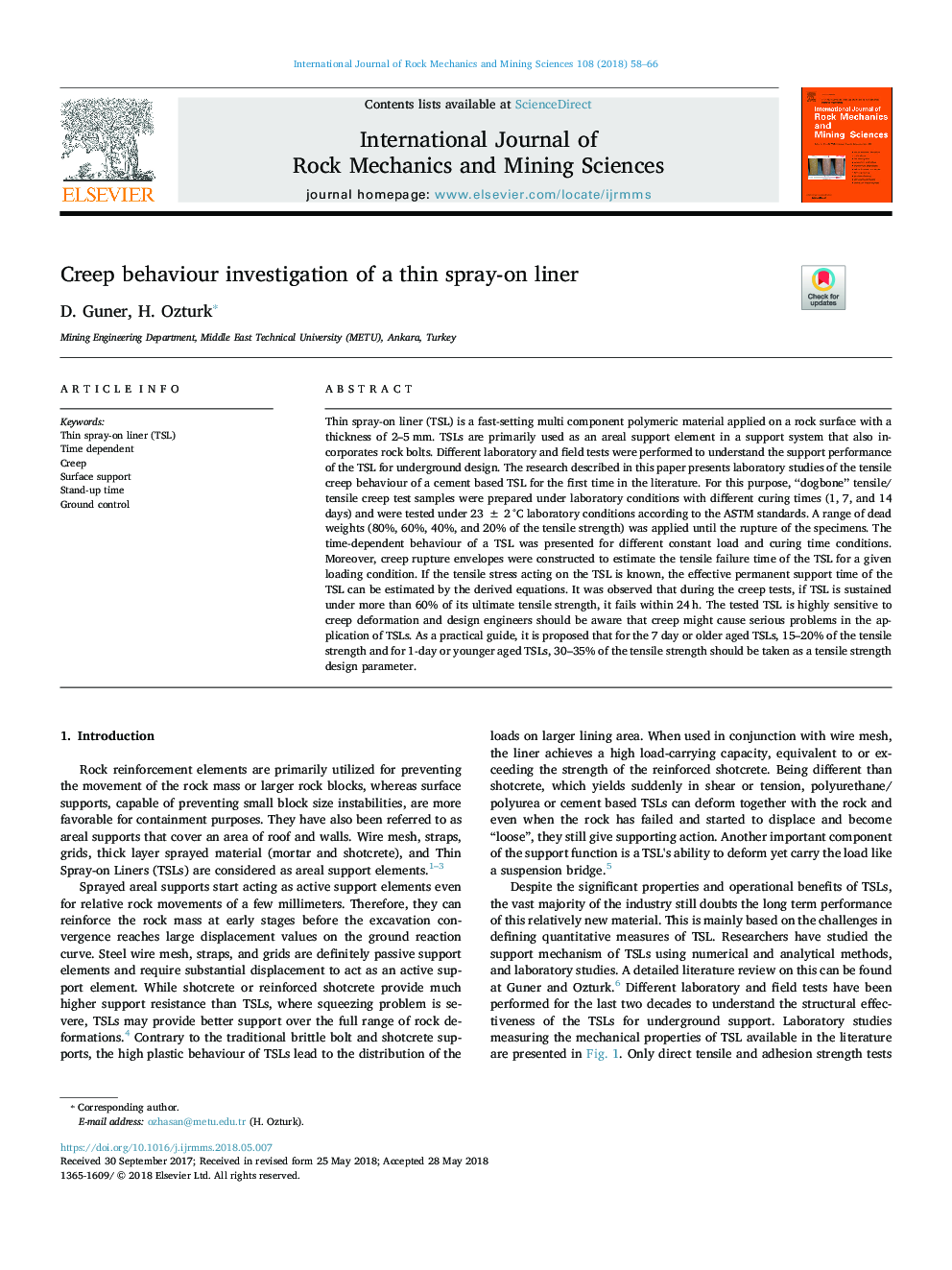| کد مقاله | کد نشریه | سال انتشار | مقاله انگلیسی | نسخه تمام متن |
|---|---|---|---|---|
| 7206116 | 1468661 | 2018 | 9 صفحه PDF | دانلود رایگان |
عنوان انگلیسی مقاله ISI
Creep behaviour investigation of a thin spray-on liner
ترجمه فارسی عنوان
بررسی رفتار خزش یخچال اسپری نازک
دانلود مقاله + سفارش ترجمه
دانلود مقاله ISI انگلیسی
رایگان برای ایرانیان
موضوعات مرتبط
مهندسی و علوم پایه
علوم زمین و سیارات
مهندسی ژئوتکنیک و زمین شناسی مهندسی
چکیده انگلیسی
Thin spray-on liner (TSL) is a fast-setting multi component polymeric material applied on a rock surface with a thickness of 2-5â¯mm. TSLs are primarily used as an areal support element in a support system that also incorporates rock bolts. Different laboratory and field tests were performed to understand the support performance of the TSL for underground design. The research described in this paper presents laboratory studies of the tensile creep behaviour of a cement based TSL for the first time in the literature. For this purpose, ''dogbone'' tensile/tensile creep test samples were prepared under laboratory conditions with different curing times (1, 7, and 14 days) and were tested under 23â¯Â±â¯2â¯Â°C laboratory conditions according to the ASTM standards. A range of dead weights (80%, 60%, 40%, and 20% of the tensile strength) was applied until the rupture of the specimens. The time-dependent behaviour of a TSL was presented for different constant load and curing time conditions. Moreover, creep rupture envelopes were constructed to estimate the tensile failure time of the TSL for a given loading condition. If the tensile stress acting on the TSL is known, the effective permanent support time of the TSL can be estimated by the derived equations. It was observed that during the creep tests, if TSL is sustained under more than 60% of its ultimate tensile strength, it fails within 24â¯h. The tested TSL is highly sensitive to creep deformation and design engineers should be aware that creep might cause serious problems in the application of TSLs. As a practical guide, it is proposed that for the 7â¯day or older aged TSLs, 15-20% of the tensile strength and for 1-day or younger aged TSLs, 30-35% of the tensile strength should be taken as a tensile strength design parameter.
ناشر
Database: Elsevier - ScienceDirect (ساینس دایرکت)
Journal: International Journal of Rock Mechanics and Mining Sciences - Volume 108, August 2018, Pages 58-66
Journal: International Journal of Rock Mechanics and Mining Sciences - Volume 108, August 2018, Pages 58-66
نویسندگان
D. Guner, H. Ozturk,
